 Cheyenne) are a Native American people of the Great Plains, who are of the Algonquian language family. The Cheyenne Nation is composed of two united tribes, the Só'taeo'o and theTsétsêhést).
Cheyenne) are a Native American people of the Great Plains, who are of the Algonquian language family. The Cheyenne Nation is composed of two united tribes, the Só'taeo'o and theTsétsêhést).
The Cheyenne are thought to have branched off other tribes of Algonquian stock inhabiting lands around the Great Lakes in present-day Minnesota, perhaps ca. 1500. In historic times they moved west, migrating across the Mississippi River and into North and South Dakota.

During the early 19th century, the Cheyenne formed a unified tribe, with more centralized authority through ritual ceremonies and structure than other Plains Indians. Having settled the Black Hills of South Dakota and the Powder River Country of present-dayMontana, they introduced the horse culture to Lakota (Sioux) bands about 1730. Allied with the Arapaho, the Cheyenne pushed theKiowa to the South. In turn, they were pushed west by the more numerous Lakota.

In the centuries before European contact, the Cheyenne were at times allied with bands of the Lakota and Arapaho. In the 18th century, they migrated west away from Lakota warriors, but by the next century, bands of Lakota had followed them into the Black Hills and Powder River Country. By the mid-nineteenth century, they were sometimes allied with other Plains tribes.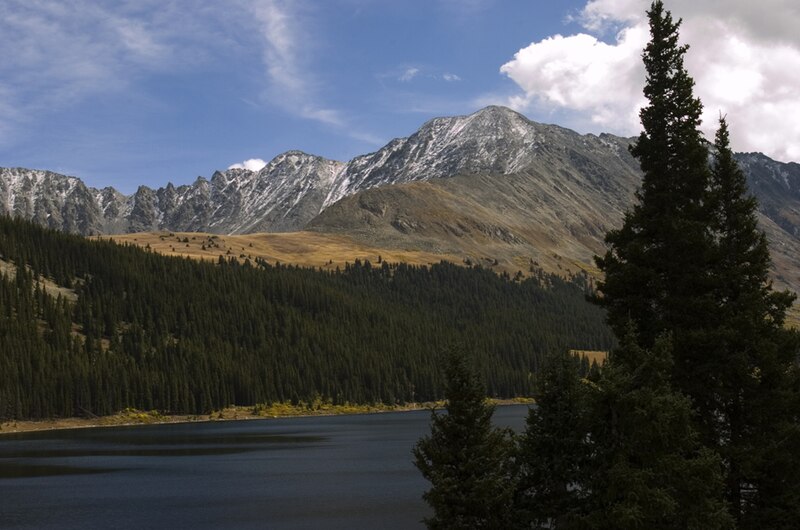

The Cheyenne are one of the best known of the Plains tribes. The Cheyenne Nation formed into ten bands, spread across the Great Plains, from southern Colorado to the Black Hills in South Dakota. At the same time, they created a centralized structure through ritual ceremonies, such as the Sun Dance.

When gathered, the bands leaders met in formal council. Alone among the Plains tribes, they waged war at the tribal level, first against their traditional enemy, the Crow, and later (1856–1879) against United States Armyforces. In the mid-19th century, the bands began to split, with some bands choosing to remain near the Black Hills, while others chose to remain near the Platte Rivers of central Colorado.
The Northern Cheyenne, known in Cheyenne either as Notameohmésêhese meaning "Northern Eaters" or simply as Ohmésêhesemeaning "Eaters", live in southeast Montana on the Northern Cheyenne Indian Reservation. In the 2000 census, the reservation had a total population of 4,400, with 72.8%, or about 3,250 people, identifying as Cheyenne. The Northern Cheyenne Tribe reports 9,945 enrolled tribal members as of 2011.
 , near present-day Chicago, Illinois. According to tribal tradition, during the 17th century the Cheyenne were driven by the Ho hé (Assiniboine) from the Great Lakes region to present-day Minnesota and North Dakota, where they established villages. The most prominent of the ancient Cheyenne villages is Biesterfeldt Village, in eastern North Dakota along the Sheyenne
, near present-day Chicago, Illinois. According to tribal tradition, during the 17th century the Cheyenne were driven by the Ho hé (Assiniboine) from the Great Lakes region to present-day Minnesota and North Dakota, where they established villages. The most prominent of the ancient Cheyenne villages is Biesterfeldt Village, in eastern North Dakota along the Sheyenne  River. Tradition tells that they first reached the Missouri River in 1676.
River. Tradition tells that they first reached the Missouri River in 1676.
The Southern Cheyenne, known in Cheyenne as Heévâhetaneo'o meaning "Roped People", together with the Southern Arapaho, form the federally recognized tribe, the Cheyenne and Arapaho Tribes, situated in western Oklahoma. Their combined population is 12,130, as of 2008. In 2003, about 8,000 of these identified as Cheyenne. With continued intermarriage, it is difficult to separate the tribes administratively


On the Missouri, the Cheyenne came into contact with the neighboring Mandan, Hidatsa and Arikara nations, and they adopted many of their cultural characteristics. They were first of the later Plains tribes into the Black Hills and Powder River Country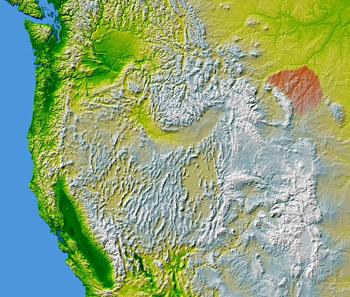 . About 1730 they introduced the horse to Lakota bands. Conflict with migrating Lakota and Ojibwa nations forced the Cheyenne further west, and they in turn pushed the Kiowa to the south. By 1776 the Lakota had overwhelmed the Cheyenne and taken over much of their territory near theBlack Hills.
. About 1730 they introduced the horse to Lakota bands. Conflict with migrating Lakota and Ojibwa nations forced the Cheyenne further west, and they in turn pushed the Kiowa to the south. By 1776 the Lakota had overwhelmed the Cheyenne and taken over much of their territory near theBlack Hills.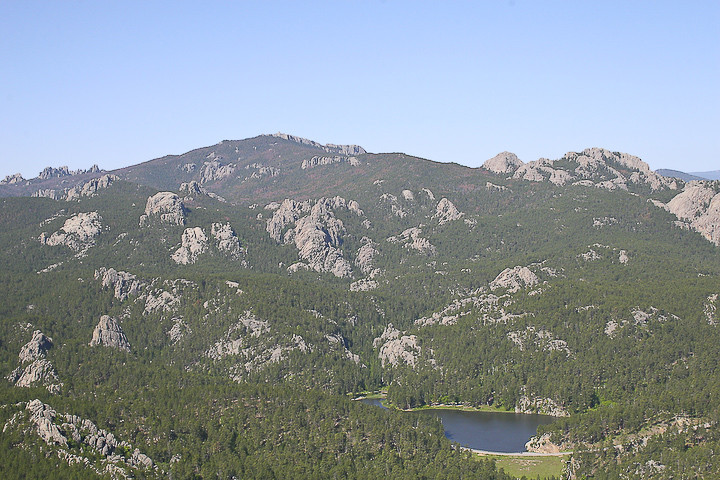 In 1804, Lewis and Clark visited a surviving Cheyenne village in North Dakota. Such European American explorers learned many different names for the Cheyenne, and did not realize how the different sections were forming a unified tribe.
In 1804, Lewis and Clark visited a surviving Cheyenne village in North Dakota. Such European American explorers learned many different names for the Cheyenne, and did not realize how the different sections were forming a unified tribe.
 . About 1730 they introduced the horse to Lakota bands. Conflict with migrating Lakota and Ojibwa nations forced the Cheyenne further west, and they in turn pushed the Kiowa to the south. By 1776 the Lakota had overwhelmed the Cheyenne and taken over much of their territory near theBlack Hills.
. About 1730 they introduced the horse to Lakota bands. Conflict with migrating Lakota and Ojibwa nations forced the Cheyenne further west, and they in turn pushed the Kiowa to the south. By 1776 the Lakota had overwhelmed the Cheyenne and taken over much of their territory near theBlack Hills. In 1804, Lewis and Clark visited a surviving Cheyenne village in North Dakota. Such European American explorers learned many different names for the Cheyenne, and did not realize how the different sections were forming a unified tribe.
In 1804, Lewis and Clark visited a surviving Cheyenne village in North Dakota. Such European American explorers learned many different names for the Cheyenne, and did not realize how the different sections were forming a unified tribe.
Despite being an oral culture, the Cheyenne developed a complex centralized authority and ritual ceremonialism that united the tribe. The ten bands had four leaders each, and the forty-four men (Council of Forty-Four) met to deliberate at regular tribal gatherings, centered around the Sun Dance In addition, they developed the ceremony of the Sacred Arrows, which they carried when they waged tribal-level war.
At the beginning of the 19th century, many Cheyenne lived near the Black Hills, but engaged in hunting and trading for horses as far south as the Arkansas River  . They may have ranged into Nuevo Mexico for horse-stealing raids. Some bands followed Kiowa and Arapaho to the southern areas. They traded both with the Spaniards, the French, and with other American Indian tribes, trading goods and materials obtained on the upper Missouri River with those of southern tribes.
. They may have ranged into Nuevo Mexico for horse-stealing raids. Some bands followed Kiowa and Arapaho to the southern areas. They traded both with the Spaniards, the French, and with other American Indian tribes, trading goods and materials obtained on the upper Missouri River with those of southern tribes.
By the mid-19th century, the Cheyenne had mostly abandoned their earlier sedentary agricultural and pottery traditions because of changed conditions. They fully adopted the classic nomadic Plains culture. They replaced their earth lodges with portable tipis and switched their diet from fish and agricultural produce, to mainly bison and wild fruits and vegetables. Having acquired horses, they adopted a nomadic lifestyle, with their range expanding from the upper Missouri River into what is now Wyoming, Montana, Colorado, and South Dakota.

As early as 1820, traders and explorers reported contact with Cheyenne at present-day Denver, Colorado and on the Arkansas River. They were probably hunting and trading in that area earlier. They may have migrated to the south for winter. The Hairy Rope band is reputed to have been the first band to move south, capturing wild horses as far south as the Cimarron River Valley.

In addition to endemic warfare with the Assiniboine to the north, and occasional conflict with the Lakota, the Cheyenne warred with the Crow.
They suffered a major defeat at their hands in 1819. The following year, they took many Crow prisoners, who were adopted and incorporated into the tribe. Endemic warfare with the Crow, the Ute, and the Pawnee were a regular pattern of Cheyenne life until the 1860s.

Following reports in the 1820s of Cheyenne and other tribes' raids on parties on the Santa Fe Trail, US Army troops were sent out from Fort Leavenworth, Kansas to protect settlers on the trail. In
US Army troops were sent out from Fort Leavenworth, Kansas to protect settlers on the trail. In
 US Army troops were sent out from Fort Leavenworth, Kansas to protect settlers on the trail. In
US Army troops were sent out from Fort Leavenworth, Kansas to protect settlers on the trail. In 
1834 Charles Bent and his partners established Bent's Fort on the Arkansas River in southeast present-day Colorado.

The Bents had been trading on the upper Missouri River but were unsuccessful. As they were good friends with the Cheyenne, they relocated to the Arkansas, where the Cheyenne and Arapaho traded with them.

Treaty of 1825

In the summer of 1825, the tribe was visited on the upper Missouri by a US treaty commission consisting of General Henry Atkinson and Indian agent Benjamin O'Fallon,
accompanied by a military escort of 476 men. General Atkinson and his fellow commissioner left Fort Atkinson on May 16, 1825. Ascending the Missouri, they negotiated treaties of friendship and trade with tribes of the upper Missouri, including the Arikara, the Cheyenne, the Crow, the Mandan, the Ponca, and several bands of the Sioux. At that time the US had competition from
on May 16, 1825. Ascending the Missouri, they negotiated treaties of friendship and trade with tribes of the upper Missouri, including the Arikara, the Cheyenne, the Crow, the Mandan, the Ponca, and several bands of the Sioux. At that time the US had competition from
British traders on the upper Missouri, who came down from Canada.
 on May 16, 1825. Ascending the Missouri, they negotiated treaties of friendship and trade with tribes of the upper Missouri, including the Arikara, the Cheyenne, the Crow, the Mandan, the Ponca, and several bands of the Sioux. At that time the US had competition from
on May 16, 1825. Ascending the Missouri, they negotiated treaties of friendship and trade with tribes of the upper Missouri, including the Arikara, the Cheyenne, the Crow, the Mandan, the Ponca, and several bands of the Sioux. At that time the US had competition fromBritish traders on the upper Missouri, who came down from Canada.
The treaties acknowledged that the tribes lived within the United States, vowed perpetual friendship between the US and the tribes, and, recognizing the right of the United States to regulate trade, the tribes promised to deal only with licensed traders. The tribes agreed to forswear private retaliation for injuries, and to return or indemnify the owner of stolen horses or other goods. The commission's efforts to contact the Blackfoot and the Assiniboine were unsuccessful. Along their return to Fort Atkinson at the Council Bluff in Nebraska, the commission had successful negotiations with the Ota, the Pawnee and the Omaha.
Increased traffic of emigrants along the related Oregon, Mormon and California trails, beginning in the early 1840s, heightened competition with Native Americans for scarce resources of water and game in arid areas. With resource depletion along the trails, the Cheyenne became increasingly divided into the Northern Cheyenne and Southern Cheyenne, where they could have adequate territory for sustenance.
During the California Gold Rush, emigrants brought in cholera. It spread in mining camps and waterways due to poor sanitation. The disease was generally a major cause of death for emigrants, about one-tenth of whom died during their journeys.

Perhaps from traders, the cholera epidemic reached the Plains Indians in 1849, resulting in severe loss of life during the summer of that year. Historians estimate about 2,000 Cheyenne died, one-half to two-thirds of their population. There were significant losses among other tribes as well, which weakened their social structures. Perhaps because of severe loss of trade during the 1849 season, Bent's Fort was abandoned and burned.
In 1846 Thomas Fitzpatrick was appointed US Indian agent for the upper Arkansas and Platte River. His efforts to negotiate with the Northern Cheyenne, the Arapaho and other tribes led to a great council at Fort Laramie in 1851.
His efforts to negotiate with the Northern Cheyenne, the Arapaho and other tribes led to a great council at Fort Laramie in 1851. Treaties were negotiated by a commission consisting of Fitzpatrick and D.D. Mitchell, US Superintendent of Indian Affairs, with the Indians of the northern plains
Treaties were negotiated by a commission consisting of Fitzpatrick and D.D. Mitchell, US Superintendent of Indian Affairs, with the Indians of the northern plains
 His efforts to negotiate with the Northern Cheyenne, the Arapaho and other tribes led to a great council at Fort Laramie in 1851.
His efforts to negotiate with the Northern Cheyenne, the Arapaho and other tribes led to a great council at Fort Laramie in 1851. Treaties were negotiated by a commission consisting of Fitzpatrick and D.D. Mitchell, US Superintendent of Indian Affairs, with the Indians of the northern plains
Treaties were negotiated by a commission consisting of Fitzpatrick and D.D. Mitchell, US Superintendent of Indian Affairs, with the Indians of the northern plainsTo reduce inter-tribal warfare on the Plains, the government officials "assigned" territories to each tribe and had them pledge mutual peace. In addition, the government secured permission to build and maintain roads for European-American travelers and traders through Indian country on the Plains, such as the Emigrant Trail and the Santa Fe Trail, and to maintain forts to guard them. The tribes were compensated with annuities of cash and supplies for such encroachment on their territories.
The Fort Laramie Treaty of 1851 affirmed the Cheyenne and Arapaho territory on the Great Plains between the North Platte River and the Arkansas. This territory included what is now Colorado, east of the Front Range of theRockies and north of the Arkansas River; Wyoming and Nebraska, south of the North Platte River; and extreme western Kansas


In April 1856, an incident at the Platte River Bridge (near present-day Casper, Wyoming),  resulted in the wounding of a Cheyenne warrior.
resulted in the wounding of a Cheyenne warrior.
 resulted in the wounding of a Cheyenne warrior.
resulted in the wounding of a Cheyenne warrior. 
He returned to the Cheyenne on the plains. During the summer of 1856, Indians attacked travelers along the Emigrant Trail near Fort Kearny. In retaliation, the US Cavalry attacked a Cheyenne camp on Grand Island in Nebraska(above). They killed ten Cheyenne warriors and wounded eight or more.
Cheyenne parties attacked at least three emigrant settler parties before returning to the Republican River.

The Indian agent at Fort Laramie negotiated with the Cheyenne to reduce hostilities, but the Secretary of War ordered the 1st Cavalry Regiment (1855) to carry out a punitive expedition under the command of Colonel Edwin V. Sumner. He went against the Cheyenne in the spring of 1857. Major John Sedgwick led part of the expedition up the Arkansas River, and via Fountain Creek to the South Platte River.

Sumner's command went west along the North Platte to Fort Laramie, then down along the Front Range to the South Platte. The combined force of 400 troops went east through the plains searching for Cheyenne.
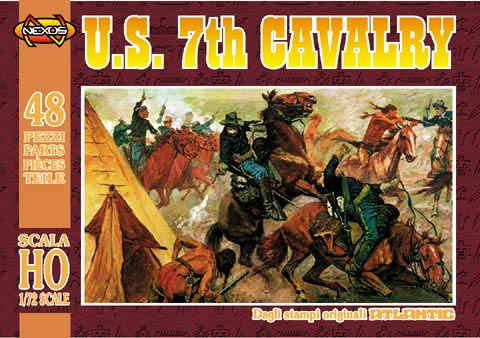
 foundry and dixon
foundry and dixonUnder the influence of the medicine man White Bull (also called Ice) and Grey Beard (also called Dark), the Cheyenne went into battle believing that strong spiritual medicine would prevent the soldiers' guns from firing. They were told that if they dipped their hands in a nearby lake, they had only to raise their hands to repel army bullets. Hands raised, the Cheyenne surrounded the advancing troops as they advanced near the Solomon River. Sumner ordered a cavalry charge and the troops charged with drawn sabers; the Cheyenne fled. With tired horses after long marches, the cavalry could not engage more than a few Cheyenne, as their horses were fresh.
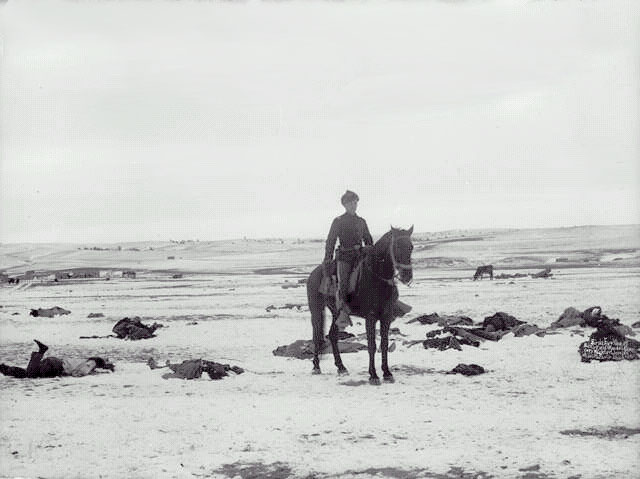
This was the first battle which the Cheyenne fought against the US Army. Casualties were few on each side; J.E.B. Stuart, then a young lieutenant, was shot in the breast while attacking a Cheyenne warrior with a sabre. The troops continued on and two days later burned a hastily abandoned Cheyenne camp; they destroyed lodges and the winter supply of buffalo meat.
 ]
]Sumner continued to Bent's Fort. To punish the Cheyenne, he distributed their annuities to the Arapaho. He intended further punitive actions, but the Army ordered him to Utah because of an outbreak of trouble with the Mormons. (This became known as the Utah War.) The Cheyenne moved below the Arkansas into Kiowa and Comanche country. In the fall, the Northern Cheyenne returned to their country north of the Platte.
(1).jpg)
Starting in 1859 with the Colorado Gold Rush, European-American settlers moved into lands reserved for the Cheyenne and other Plains Indians. Travel greatly increased along the Emigrant Trail along the South Platte River and some emigrants stopped before going on to California. For several years there was peace between settlers and Indians. The only conflicts were related to the endemic warfare between the Cheyenne and Arapaho of the plains and the Utes of the mountains.

 Dull Knife (Cheyenne: Vóóhéhéve orLakota: Tamílapéšni), Chief of Northern Cheyennes at Battle of Little Bighorn
Dull Knife (Cheyenne: Vóóhéhéve orLakota: Tamílapéšni), Chief of Northern Cheyennes at Battle of Little BighornUS negotiations with Black Kettle and other Cheyenne favoring peace resulted in the Treaty of Fort Wise: it established a small reservation for the Cheyenne in southeastern Colorado in exchange for the territory agreed to in the Fort Laramie Treaty of 1851.
Many Cheyenne did not sign the treaty, and they continued to live and hunt on their traditional grounds in the Smokey Hill and Republican basins, between the Arkansas and the South Platte, where there were plentiful buffalo. Efforts to make a wider peace continued, but in the spring of 1864,John Evans, governor of Colorado Territory, and John Chivington, commander of the Colorado Volunteers, a citizens militia, began a series of attacks on Indians camping or hunting on the plains. They killed any Indian on sight and initiated the Colorado War. General warfare broke out and Indians made many raids on the trail along the South Platte which Denver depended on for supplies. The Army closed the road from August 15 until September 24, 1864.
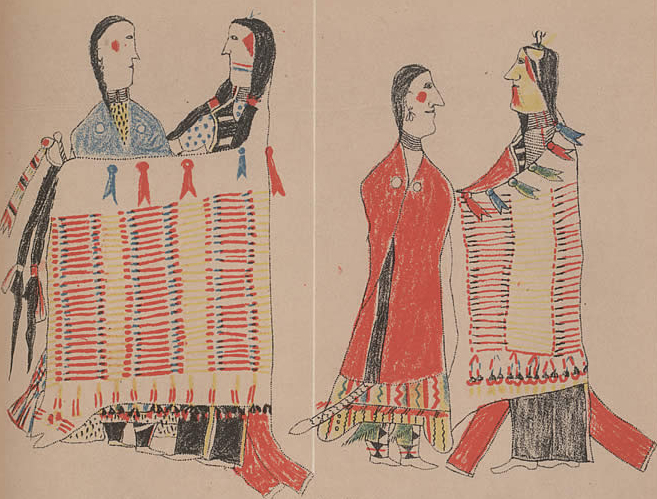
Black Kettle continued to desire peace. He did not join in the second raid or in the plan to go north to the Powder River country. He left the large camp and returned with 80 lodges of his tribesmen to the Arkansas River, where he intended to seek peace with the US.

On November 29, 1864, the Colorado Militia attacked a Cheyenne and Arapaho encampment under Chief Black Kettle, although it flew a flag of truce and indicated its allegiance to the US government. The Sand Creek massacre, as it was known, resulted in the death of between 150 and 200 Cheyenne, mostly unarmed women and children. The survivors fled northeast and joined the camps of the Cheyenne on the Smokey Hill and Republican rivers. There warriors smoked the war pipe, passing it from camp to camp among the Sioux, Cheyenne and Arapaho. In January 1865 they planned and carried out an attack with about 1000 warriors on Camp Rankin, a stage station and fort at Julesburg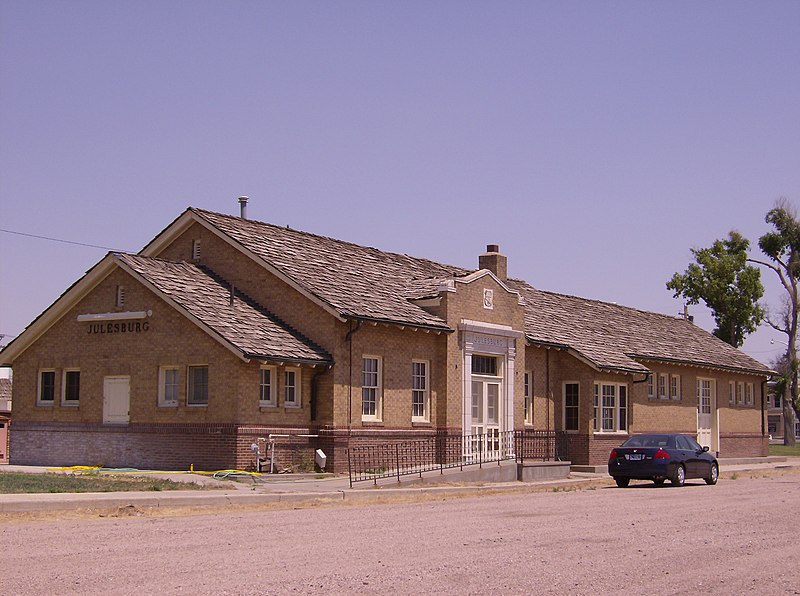 . The Indians made numerous raids along the South Platte, both east and west of Julesburg, and raided the fort again in early February. They captured much loot and killed many European Americans. Most of the Indians moved north into Nebraska on their way to the Black Hills and the Powder River.
. The Indians made numerous raids along the South Platte, both east and west of Julesburg, and raided the fort again in early February. They captured much loot and killed many European Americans. Most of the Indians moved north into Nebraska on their way to the Black Hills and the Powder River.
 . The Indians made numerous raids along the South Platte, both east and west of Julesburg, and raided the fort again in early February. They captured much loot and killed many European Americans. Most of the Indians moved north into Nebraska on their way to the Black Hills and the Powder River.
. The Indians made numerous raids along the South Platte, both east and west of Julesburg, and raided the fort again in early February. They captured much loot and killed many European Americans. Most of the Indians moved north into Nebraska on their way to the Black Hills and the Powder River.
The Northern Cheyenne fought in the Battle of the Little Bighorn, which took place on June 25, 1876. The Cheyenne, together with the Lakota, the Sioux and a small band of Arapaho, killed Lt. Col. George Armstrong Custer and much of his 7th Cavalry contingent of Army soldiers. Historians have estimated the population of the Cheyenne, Lakota and Arapaho encampment along theLittle Bighorn River was approximately 10,000, making it one of the largest gatherings of Native Americans in North America in pre-reservation times. News of the event traveled across the United States and reached Washington, D.C., just as the nation was celebrating its Centennial. Public reaction arose in outrage against the Cheyenne.
u
 Little Coyote (Little Wolf) and Morning Star (Dull Knife), chiefs of the Northern Cheyennes
Little Coyote (Little Wolf) and Morning Star (Dull Knife), chiefs of the Northern Cheyennes
wing the Battle of the Little Bighorn, the US Army increased attempts to capture the Cheyenne. In 1877, after the Dull Knife Fight, when Crazy Horse surrendered at Fort Robinson, a few Cheyenne chiefs and their people surrendered as well. They were Dull Knife, Little Wolf, Standing Elk, and Wild Hog, with nearly 1,000 Cheyenne. Later that year Two Moon surrendered at Fort Keogh, with 300 Cheyenne. The Cheyenne wanted and expected to live on the reservation with the Sioux in accordance to an April 29, 1868 treaty of Fort Laramie, which both Dull Knife and Little Wolf had signed.below
As part of a US increase in troops following the Battle of the Little Bighorn, the Army reassigned Colonel Ranald S. Mackenzie and his Fourth Cavalry to the Department of the Platte. Stationed initially at Camp Robinson, they formed the core of the Powder River Expedition. It departed in October 1876 to locate the northern Cheyenne villages. On November 25, 1876, his column discovered and defeated a village of Northern Cheyenne in the Dull Knife Fight in Wyoming Territory. After the soldiers destroyed the lodges and supplies, and confiscated the horses, the Northern Cheyenne soon surrendered. They hoped to remain with the Sioux in the north but the US pressured them to locate with the Southern Cheyenne on their reservation in Indian Territory. After a difficult council, the Northern Cheyenne eventually agreed to go South.
When the Northern Cheyenne arrived at Indian Territory, conditions were very difficult: rations were inadequate, no buffalo survived near the reservation, and, according to several sources, there was malaria among the people. In the fall of 1878, a portion of the Northern Cheyenne, led by Little Wolf and Dull Knife, tried to return to the north. Upon reaching the northern area, they split into two bands. That led by Dull Knife was imprisoned in an unheated barracks at Fort Robinson without food or water. Escaping on January 9, 1879, many died in the Fort Robinson tragedy.
Eventually the US granted the Northern Cheyenne a reservation, in southern Montana.
The Cheyenne who traveled to Fort Keogh (present day Miles City, Montana) , including Little Wolf, settled near the fort. Many of the Cheyenne worked with the army as scouts. The Cheyenne scouts were pivotal in helping the Army find Chief Joseph and his band of Nez Percé in northern Montana. Fort Keogh became a staging and gathering point for the Northern Cheyenne. Many families began to migrate south to the Tongue River watershed area, where they established homesteads. The US established the Tongue River Indian Reservation, now named the Northern Cheyenne Indian Reservation, of 371,200 acres (1,502 km2) by the executive order of President Chester A. ArthurNovember 16, 1884. It excluded Cheyenne who had homesteaded further east near the Tongue River. Those people were served by the St. Labres Catholic Mission. The western boundary is the Crow Indian Reservation. On March 19, 1900, President William McKinley extended the reservation to the west bank of the Tongue River, making a total of 444,157 acres (1,797 km2). Those who had homesteaded east of the Tongue River were relocated to the west of the river. The Northern Cheyenne sharing land of the Lakota at Pine Ridge Reservation were finally allowed to return to the Tongue River on their own reservation. Along with the Lakota and Apache, the Cheyenne were the last nations to be subdued and placed on reservations. (The Seminole tribe of Florida never made a treaty with the US government.)
, including Little Wolf, settled near the fort. Many of the Cheyenne worked with the army as scouts. The Cheyenne scouts were pivotal in helping the Army find Chief Joseph and his band of Nez Percé in northern Montana. Fort Keogh became a staging and gathering point for the Northern Cheyenne. Many families began to migrate south to the Tongue River watershed area, where they established homesteads. The US established the Tongue River Indian Reservation, now named the Northern Cheyenne Indian Reservation, of 371,200 acres (1,502 km2) by the executive order of President Chester A. ArthurNovember 16, 1884. It excluded Cheyenne who had homesteaded further east near the Tongue River. Those people were served by the St. Labres Catholic Mission. The western boundary is the Crow Indian Reservation. On March 19, 1900, President William McKinley extended the reservation to the west bank of the Tongue River, making a total of 444,157 acres (1,797 km2). Those who had homesteaded east of the Tongue River were relocated to the west of the river. The Northern Cheyenne sharing land of the Lakota at Pine Ridge Reservation were finally allowed to return to the Tongue River on their own reservation. Along with the Lakota and Apache, the Cheyenne were the last nations to be subdued and placed on reservations. (The Seminole tribe of Florida never made a treaty with the US government.)
 , including Little Wolf, settled near the fort. Many of the Cheyenne worked with the army as scouts. The Cheyenne scouts were pivotal in helping the Army find Chief Joseph and his band of Nez Percé in northern Montana. Fort Keogh became a staging and gathering point for the Northern Cheyenne. Many families began to migrate south to the Tongue River watershed area, where they established homesteads. The US established the Tongue River Indian Reservation, now named the Northern Cheyenne Indian Reservation, of 371,200 acres (1,502 km2) by the executive order of President Chester A. ArthurNovember 16, 1884. It excluded Cheyenne who had homesteaded further east near the Tongue River. Those people were served by the St. Labres Catholic Mission. The western boundary is the Crow Indian Reservation. On March 19, 1900, President William McKinley extended the reservation to the west bank of the Tongue River, making a total of 444,157 acres (1,797 km2). Those who had homesteaded east of the Tongue River were relocated to the west of the river. The Northern Cheyenne sharing land of the Lakota at Pine Ridge Reservation were finally allowed to return to the Tongue River on their own reservation. Along with the Lakota and Apache, the Cheyenne were the last nations to be subdued and placed on reservations. (The Seminole tribe of Florida never made a treaty with the US government.)
, including Little Wolf, settled near the fort. Many of the Cheyenne worked with the army as scouts. The Cheyenne scouts were pivotal in helping the Army find Chief Joseph and his band of Nez Percé in northern Montana. Fort Keogh became a staging and gathering point for the Northern Cheyenne. Many families began to migrate south to the Tongue River watershed area, where they established homesteads. The US established the Tongue River Indian Reservation, now named the Northern Cheyenne Indian Reservation, of 371,200 acres (1,502 km2) by the executive order of President Chester A. ArthurNovember 16, 1884. It excluded Cheyenne who had homesteaded further east near the Tongue River. Those people were served by the St. Labres Catholic Mission. The western boundary is the Crow Indian Reservation. On March 19, 1900, President William McKinley extended the reservation to the west bank of the Tongue River, making a total of 444,157 acres (1,797 km2). Those who had homesteaded east of the Tongue River were relocated to the west of the river. The Northern Cheyenne sharing land of the Lakota at Pine Ridge Reservation were finally allowed to return to the Tongue River on their own reservation. Along with the Lakota and Apache, the Cheyenne were the last nations to be subdued and placed on reservations. (The Seminole tribe of Florida never made a treaty with the US government.)The Northern Cheyenne earned their right to remain in the north near the Black Hills, land they considered sacred. The Cheyenne also managed to retain their culture, religion and language. Today, the Northern Cheyenne Nation is one of the few American Indian nations to have control over the majority of its land base, currently 98%.
The traditional Cheyenne government system is a politically unified North American indigenous nation. Most other nations were divided into politically autonomous bands, whereas the Cheyenne bands were politically unified. The central traditional government system of the Cheyenne was the "Arrow Keeper" followed by the "Council of Forty-Four". The name denotes the number of seated chiefs on the council. Each of the ten bands had four seated chief delegates; the remaining four chiefs were the principal advisers of the other delegates. This system also regulated the Cheyenne military societies that developed for planning warfare, enforcing rules, and conducting ceremonies. By the time the Cheyenne reached the Great Plains, they had developed this government.
Anthropologists debate about Cheyenne society organization. When the Cheyenne were fully adapted to the classic Plains culture, they had a bi-lateral band kinship system. However, some anthropologists reported that the Cheyenne had a matrilineal band system. Studies into whether the Cheyenne developed a matrilineal clan system are inconclusive.
As they abandoned their agricultural villages near the Missouri River and acquired horses, the Cheyenne adopted the Plains Indian culture. In this nomadic life, the men hunted
andfought with and raided other tribes. The women dressed and tanned hides for food, clothing, shelter and other uses. and gathered roots, berries and other useful plants, From the products of hunting and gathering, they made lodges, clothing, and other equipment. Their lives were active and physically demanding. The range of the Cheyenne was first the area in and near the Black Hills, but later all the Great Plains from Dakota to the Arkansas River. . Lt. Read of the 3rd Infantry and John O. Austin are in background. Photograph by William S. Soule.
. Lt. Read of the 3rd Infantry and John O. Austin are in background. Photograph by William S. Soule.  One Thousand White Women is the story of May Dodd and a colorful assembly of pioneer women who, under the auspices of the U.S. government, travel to the western prairies in 1875 to intermarry among the Cheyenne Indians. The covert and controversial "Brides for Indians" program, launched by the administration of Ulysses S. Grant, is intended to help assimilate the Indians into the white man's world. Toward that end May and her friends embark upon the adventure of their lifetime. Jim Fergus has so vividly depicted the American West that it is as if these diaries are a capsule in time.
One Thousand White Women is the story of May Dodd and a colorful assembly of pioneer women who, under the auspices of the U.S. government, travel to the western prairies in 1875 to intermarry among the Cheyenne Indians. The covert and controversial "Brides for Indians" program, launched by the administration of Ulysses S. Grant, is intended to help assimilate the Indians into the white man's world. Toward that end May and her friends embark upon the adventure of their lifetime. Jim Fergus has so vividly depicted the American West that it is as if these diaries are a capsule in time.Marriage was a formal matter. Premarital sex was strictly prohibited and a girl's virginity was carefully guarded by her family. Because a young man postponed Marriage until he had
 horses and a respectable war record, Courtship often lasted for several years. The most respectable Marriages were arranged between families, although elopement took place. Until the pattern was interrupted by epidemic disease and warfare, marriage was forbidden to a relative of any degree. Most marriages were monogamous, but polygyny was permitted, often of the sororal type a polygyny in which the wives are sisters — , with the levirate also practiced. Today
horses and a respectable war record, Courtship often lasted for several years. The most respectable Marriages were arranged between families, although elopement took place. Until the pattern was interrupted by epidemic disease and warfare, marriage was forbidden to a relative of any degree. Most marriages were monogamous, but polygyny was permitted, often of the sororal type a polygyny in which the wives are sisters — , with the levirate also practiced. Today  there is still concern about the degree of relatedness between a couple wanting to marry. Traditionally, postmarital residence was uxorilocal. With the incorporation of the Dog Soldiers into the tribal circle, residence shifted in that portion of Cheyenne society to patrilocality, resulting in two residence patterns after 1860. Divorce could be initiated by either the husband or wife for mistreatment, adultery, or other marital transgressions. A man could publicly disgrace his wife by "throwing her away" at a public gathering.
there is still concern about the degree of relatedness between a couple wanting to marry. Traditionally, postmarital residence was uxorilocal. With the incorporation of the Dog Soldiers into the tribal circle, residence shifted in that portion of Cheyenne society to patrilocality, resulting in two residence patterns after 1860. Divorce could be initiated by either the husband or wife for mistreatment, adultery, or other marital transgressions. A man could publicly disgrace his wife by "throwing her away" at a public gathering.
Domestic Unit. The primary unit of cooperation and Subsistence was the vestoz, a residential extended family of related women and their conjugal families. Although the Nuclear family is the predominant pattern today, extended families still exist, often as an adaptation to the high unemployment rates, poverty, illegitimacy, and other socioEconomic factors associated with social disadvantage.
Inheritance. Some of a man's personal possessions were buried with him, but all the remaining property was given to nonrelatives. The widow and her children retained nothing. At funerals today, give-aways are still held before the body is buried and one full year after the death. Contemporary inheritance patterns are defined by legal stipulation and kinship.
Socialization. Children were generally raised permissively. Social ideals were taught through advice, counsel, and demonstration. Although physical punishment was rarely used, gossip, teasing, and sometimes ostracism acted as negative sanctions if the child misbehaved. Many of these mechanisms are used today, but physical punishment is also now used to correct undesirable behavior.
A Cheyenne woman has higher status if she is part of an extended family with distinguished ancestors and gets on well with her female relatives; does not have members in her extended family who are alcoholics or otherwise in disrepute; is hardworking, chaste and modest; is skilled in traditional crafts; knowledgeable about Cheyenne culture and history and speaks Cheyenne fluently. A young woman with these characteristics would have an advantage in a Powwow Princess competition.

No comments:
Post a Comment